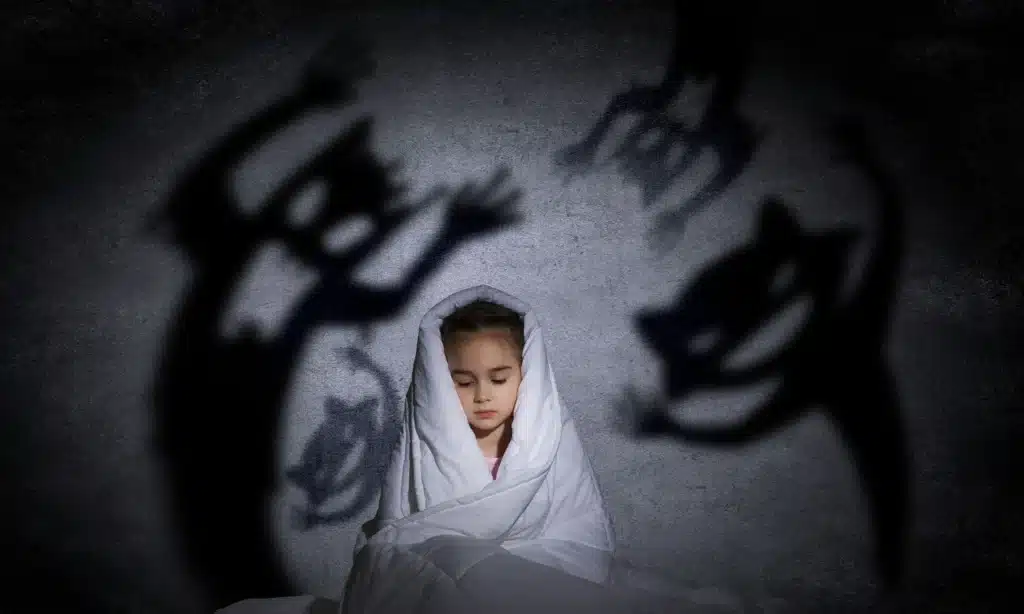Many parents face challenges when dealing with bedtime anxiety in 10 year olds. Anat Joseph, LCSW, PsyA, brings her experience as a therapist and psychoanalyst to help families understand and address childhood sleep anxiety with clarity and care.
Why Some Kids Struggle to Fall Asleep
Sleep issues in children often stem from emotional stress, overstimulation, or a disrupted sleep routine. At age 10, children experience growing awareness of their surroundings, which can increase worries at night.
Separation anxiety may also resurface at this stage, especially if routines are inconsistent or the child is going through a major transition. These feelings can make falling asleep more difficult.
It’s common for parents to notice their 10 year old crying at bedtime or asking to stay close. These behaviors signal deeper anxiety that needs attention.
Anxious children may also resist going to bed or struggle to stay asleep through the night. Identifying the root cause helps guide practical solutions.
What Triggers Bedtime Anxiety in Preteens
Preteens face new academic and social pressures, which may benefit from social anxiety therapy. These shifts can contribute to bedtime anxiety in 11 year olds (and beyond), especially when school expectations or friendship dynamics feel overwhelming.
Increased screen time, especially close to bedtime, can also disrupt the sleep-wake cycle. Bright light and overstimulating content interfere with melatonin release, making it harder for preteens to fall asleep.
Major life changes—like a family move, illness, or divorce—can heighten emotional stress. This often leads to bedtime anxiety in 12 year olds (and beyond), as older children may internalize these events but struggle to process them.
During quiet evening hours, stress tends to surface. Many children experience heightened worries at night simply because it’s the first time all day they’re still enough to feel them.
Helping Kids Cope With Sleep Anxiety
A consistent bedtime routine is key to reducing anxiety and helping an anxious child feel safe. This includes winding down at the same time each night with calming, predictable activities.
Bedtime stories, soft lighting, and a regular order of events (bath, pajamas, reading) help signal to the brain that it’s time to sleep. This also creates emotional security.
Anat Joseph often recommends age-appropriate relaxation techniques such as deep breathing, progressive muscle relaxation, or gentle stretches. These practices help the child shift out of an anxious state.
Avoid caffeine, screen time, or stressful conversations before bed. Instead, create a soothing environment that supports a healthy sleep routine.
Talk with your child during the day about their worries. Encouraging open dialogue reduces bedtime stress and helps the child process their feelings.
Create a Calm and Consistent Bedtime Routine
Establishing structure is especially helpful for anxious children. When a child knows what to expect, it reduces uncertainty and nighttime resistance.
Use visual or verbal cues, like a bedtime chart or music playlist, to reinforce sleep habits. Consistency helps the child sleep more soundly and stay asleep longer.
Use the 3-3-3 Rule for Anxiety Relief
This simple method helps reduce racing thoughts. Ask your child to name 3 things they see, 3 things they hear, and move 3 parts of their body. It grounds them in the present moment.
The 3-3-3 rule is an accessible tool that can be used before sleep or after a bad dream.
Talk About Their Worries Openly
Encourage children to share their concerns without judgment. Writing in a journal or drawing before bed may help release built-up emotions.
Normalize feelings of worry and reinforce that it’s okay to feel scared sometimes. Use calm language and active listening.
What to Avoid Before Bedtime
Avoid over-scheduling or exposing children to stressful content in the evening. These can heighten anxiety and disrupt sleep.
Too much screen time close to bedtime affects the brain’s ability to wind down. Establish a digital curfew 1-2 hours before sleep.
When Sleep Anxiety Needs Professional Help
If bedtime anxiety persists or begins to affect school performance, appetite, or mood, it may be time to seek support. Working with an anxiety therapist can provide coping tools tailored to the child’s needs.
Families who prefer virtual sessions can also consider online therapy options for convenience and flexibility.
Anat Joseph, with her background in psychoanalysis and child therapy, supports families through short-term and ongoing care. Her work is grounded in clinical experience and emotional understanding.
Signs that a child may benefit from professional help include: frequent nightmares, excessive worry, sleepwalking, or intense fear of being alone.
Addressing sleep anxiety early can improve a child’s mental health and emotional development. Children who sleep well are more resilient, focused, and emotionally regulated during the day.
Parents play a central role in creating safe, consistent sleep environments and responding calmly to signs of distress.
10 Year Old Sleep Anxiety (And Beyond)
Bedtime anxiety in 10-year-olds is common but treatable. Children can learn to relax, fall asleep, and feel safe at night with the right tools—a structured bedtime, emotional support, and professional guidance when needed.
Sleep anxiety in children can continue into adolescence, which is why some families explore teen therapy. Early support improves not just nighttime rest but daytime confidence and mental health.
By building routines and addressing worries in a calm, structured way, parents help children manage fears and become more emotionally secure.
Anat Joseph’s approach helps children and families navigate childhood sleep anxiety with care, consistency, and clinical insight.
Because Your Happiness Matters

